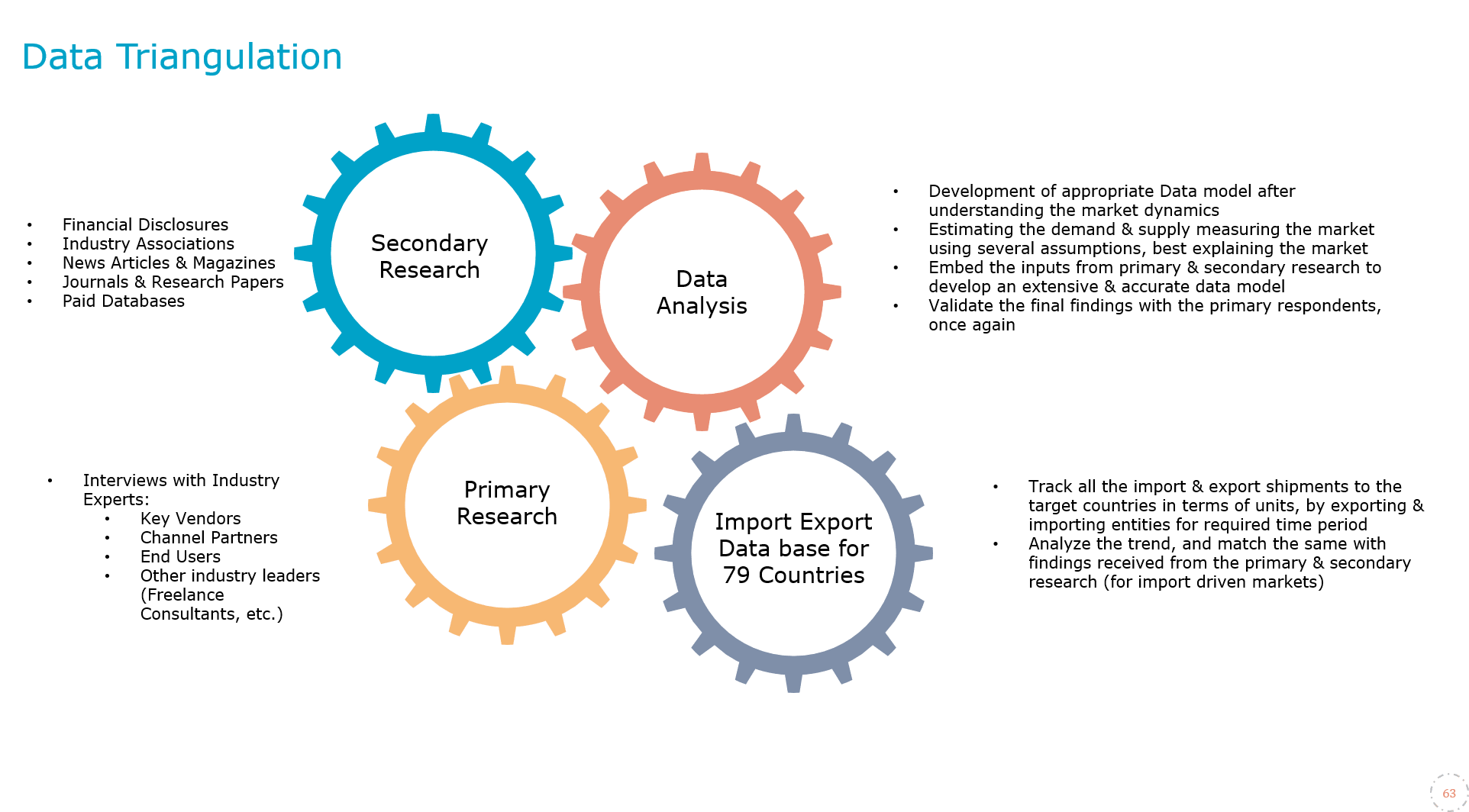
Middle East Edge Computing Market Research Report: Forecast (2022-2027)
By Component (Hardware, Software, Service), By Application (Smart Cities, Industrial IoT, Data Caching, Content Delivery, Environment Monitoring, Augmented Reality, Location Servic...es), By End-User (Manufacturing Sector, Energy & Utility Sector, Transportation and Logistics, BFSI, IT & Telecommunication, Healthcare & Life science, Retail and Consumer Goods, Government & Defense), By Enterprise Size (Small & Medium Enterprises(SMEs), Large Enterprise) Read more
- ICT & Electronics
- Nov 2021
- Pages 178
- Report Format: PDF, Excel, PPT
Edge Computing is a distributed computing structure that enables data to be analyzed, processed, and transferred at the edge of the network, i.e., where data is being generated. It helps minimize the need for data processing at a remote data center, which reduces latency & enhances process efficiency. Since edge computing also reduces server resources, associated costs, & overall bandwidth usage, several companies are adopting it significantly nowadays.
The Middle East Edge Computing Market is anticipated to grow at a CAGR of around 29.65% during the forecast period, i.e., 2022-27, says MarkNtel Advisors. The market growth attributes primarily to the technology evolution and the rising trend of BYOD (Bring-Your-Own-Device) across modern business practices. With the increasing number of IoT (Internet of Things) devices coming online, the volume of data generated is increasing rapidly. Since storing & transmitting this data is difficult & costly, it brings Edge Computing into significant demand.
| Report Coverage | Details |
|---|---|
| Study Period | Historical Data: 2017-20 |
| Base Year: 2021 | |
| Forecast Period: 2022-27 | |
| CAGR (2022-2027) | 29.65% |
| Countries Covered | UAE, Saudi Arabia, Israel, Turkey, Rest of Middle East |
| Key Companies Profiled | Cisco system, Microsoft Corporation, IBM, Google, SAP, Amazon, Hewlett Packard Enterprise Development LP, Others. |
| Unit Denominations | USD Million/Billion |
Edge computing helps avoid any security risks associated with the data by storing & processing it when its generated. Data generated by the IoT devices need to be analyzed in real-time to provide a faster response. Moreover, the rapid growth of cloud infrastructure and the surging number of intelligent applications are other crucial aspects expected to drive the market in the coming years, further states the research report, “Middle East Edge Computing Market Analysis, 2022.”
.jpg)
Impact of COVID-19 on the Middle East Edge Computing Market
- Due to the Covid-19 pandemic in 2020, organizations experienced multiple uncertainties and a large number of changes in the way they operate.
- However, the pandemic has positively influenced the Middle East Edge Computing Market.
- The lockdown imposition and other restrictions have encouraged the adoption of remote working across several industry verticals, which surged the need for edge computing to deliver cloud computing resources & cached content across the Middle East.
- Further, Edge Computing became a crucial technology in the healthcare industry owing to its several medical applications like enabling physicians to reach their patients right away using the patient data through telemedicine programs, diagnostic devices, etc.
- It has also helped healthcare professionals recognize, isolate, and treat COVID patients by analyzing real-time insights.
- Moreover, Edge Computing also plays a crucial role in enhancing customer experience by assisting online streaming platforms like Netflix and Amazon through Edge Caching.
- Hence, with the burgeoning use of online streaming platforms amidst the crisis, the overall market has been significantly benefitted.
Market Segmentation
By Component:
- Hardware
- Software
- Service
Of these three, the Hardware Component is projected to capture the largest market share in the coming years. With the adoption of advanced technologies like AMR & EDC, the use of sensors, routers, gateways, & edge nodes has greatly increased, which drives the need for hardware-based edge computing. Moreover, with the surging number of IoT & Industrial IoT (IIoT), the amount of data generated is also rising. Hence, to reduce the burden of this data across the cloud & data centers, edge computing hardware is utilized.
This edge computing hardware should be compact & highly durable and have sufficient power range, storage capacity, & connectivity to withstand tough environmental conditions. Moreover, the declining prices of gateways, sensors, edge nodes, etc., is another crucial aspect contributing to the increasing demand for edge computing hardware.
By End-User:
- Manufacturing Sector
- Energy & Utility Sector
- Transportation and Logistics
- BFSI
- IT & Telecommunication
- Healthcare & Life science
- Retail and Consumer Goods
- Government & Defense
Here, the BFSI sector is anticipated to hold a prominent market share in the coming years, mainly due to the rapidly growing digitalization and technological advancements like digital banking, Machine Learning, Blockchain, etc., across banks & financial institutions. Edge Computing helps the financial & banking sectors manage their data efficiently and improve their overall operations. The mounting trend of seamless digital payments with high security and the surging deployment of IoT devices to provide real-time analysis & enhance customer experience are also fueling the demand for edge computing across the BFSI industry.
Emirates Telecommunication Group Company (Etisalat) in Collaboration with Microsoft to Launch 5G Enterprise Multi-Access Edge Computing
- Emirates Telecommunication Group Company (Etisalat) has collaborated with Microsoft to unlock 5G scenarios with Azure Multi-access Edge Computer.
- Etisalat has joined forces with Microsoft’s Digital Crime Unit (DCU) to strengthen digital security and fulfill the increasing demand for threat intelligence.
- This partnership leverages the abilities of Etisalat Core Orchestration and Azure ARM to develop a 5G Edge Computing infrastructure that helps organizations run industry solutions.
- Edge Computing technology has so far revolutionized many industries, including logistics, smart manufacturing, Oil & Gas, and transportation across the region.
Market Dynamics:
Key Drivers
- The surging data volumes due to the increasing adoption of the IoT
- Mounting usage of computing connected mobile devices
- Rising demand for real-time insights and automated decision-making solutions among enterprises
Growth Restraints
- Substantial investments required in edge nodes & edge data centers
- Increasing prevalence of cyber-attacks owing to the booming use of IoT devices & edge nodes
- Challenges while integrating edge computing solutions with the existing cloud architecture
Key Questions Answered in the Market Research Report:
- What are the overall statistics or estimates (Overview, Size- By Value, Forecast Numbers, Segmentation, Shares) of the Middle East Edge Computing Market?
- What is the country-wise industry size, growth drivers, and challenges?
- What are the key innovations, opportunities, current & future trends, and regulations in the Middle East Edge Computing Market?
- Who are the key competitors, their key strengths & weaknesses, and how they perform in the Middle East Edge Computing Market based on a competitive benchmarking matrix?
- What are the key results derived from surveys conducted during the Middle East Edge Computing Market study?
Frequently Asked Questions
- Introduction
- Product Definition
- Research Process
- Assumption
- Market Segmentation
- Executive Summary
- Impact of Covid-19 on Middle East Edge Computing Market
- Middle East Edge Computing Market Policies and Regulations
- Middle East Edge Computing Market Dynamics
- Drivers
- Challenges
- Impact Analysis
- Middle East Edge Computing Market Trends & Insights
- Middle East Edge Computing Market Hotspots & Opportunities
- Middle East Security Edge Computing Market Outlook, (2017-2027F)
- Market Size & Analysis
- By Revenues
- Market Share & Analysis
- By Component
- Hardware
- Software
- Service
- By Application
- Smart Cities
- Industrial IoT
- Data Caching
- Content Delivery
- Environment Monitoring
- Augmented Reality
- Location Services
- Others
- By End-User
- Manufacturing Sector
- Energy & Utility Sector
- Transportation and Logistics
- BFSI
- IT & Telecommunication
- Healthcare & Life science
- Retail and Consumer Goods
- Government & Defense
- Others
- By Enterprise Size
- Small & Medium Enterprises(SMEs)
- Large Enterprise
- By Country
- UAE
- Saudi Arabia
- Israel
- Turkey
- Rest of Middle East
- By Company
- Revenue Shares
- Strategic Factorial Indexing
- Competitor Placement in MarkNtel Quadrant
- By Component
- Market Size & Analysis
- UAE Edge Computing Market Outlook, 2017-2027F
- Market Size & Analysis
- By Revenue
- Market Share & Analysis
- By Component
- By Application
- By Enterprise Size
- By End User
- Market Size & Analysis
- Saudi Arabia Edge Computing Market Outlook, 2017-2027F
- Market Size & Analysis
- By Revenue
- Market Share & Analysis
- By Component
- By Application
- By Enterprise Size
- By End User
- Market Size & Analysis
- Israel Edge Computing Market Outlook, 2017-2027F
- Market Size & Analysis
- By Revenue
- Market Share & Analysis
- By Component
- By Application
- By Enterprise Size
- By End User
- Market Size & Analysis
- Turkey Edge Computing Market Outlook, 2017-2027F
- Market Size & Analysis
- By Revenue
- Market Share & Analysis
- By Component
- By Application
- By Enterprise Size
- By End User
- Market Size & Analysis
- Competitive Benchmarking
- Competition Matrix
- Product Portfolio
- Target Markets
- Target Security Type
- Research & Development
- Strategic Alliances
- Strategic Initiatives
- Companies Profile (Business Description, Products Diversification, Solutions, Assets, Target Market, Partnership, Merger & Acquisition, etc.)
- Cisco system
- Microsoft Corporation
- IBM
- SAP
- Amazon
- Hewlett Packard Enterprise Development LP
- Others
- Competition Matrix
- Disclaimer
MarkNtel Advisors follows a robust and iterative research methodology designed to ensure maximum accuracy and minimize deviation in market estimates and forecasts. Our approach combines both bottom-up and top-down techniques to effectively segment and quantify various aspects of the market. A consistent feature across all our research reports is data triangulation, which examines the market from three distinct perspectives to validate findings. Key components of our research process include:
1. Scope & Research Design At the outset, MarkNtel Advisors define the research objectives and formulate pertinent questions. This phase involves determining the type of research—qualitative or quantitative—and designing a methodology that outlines data collection methods, target demographics, and analytical tools. They also establish timelines and budgets to ensure the research aligns with client goals.
2. Sample Selection and Data Collection In this stage, the firm identifies the target audience and determines the appropriate sample size to ensure representativeness. They employ various sampling methods, such as random or stratified sampling, based on the research objectives. Data collection is carried out using tools like surveys, interviews, and observations, ensuring the gathered data is reliable and relevant.
3. Data Analysis and Validation Once data is collected, MarkNtel Advisors undertake a rigorous analysis process. This includes cleaning the data to remove inconsistencies, employing statistical software for quantitative analysis, and thematic analysis for qualitative data. Validation steps are taken to ensure the accuracy and reliability of the findings, minimizing biases and errors.

4. Data Forecast and FinalizationThe final phase involves forecasting future market trends based on the analyzed data. MarkNtel Advisors utilize predictive modeling and time series analysis to anticipate market behaviors. The insights are then compiled into comprehensive reports, featuring visual aids like charts and graphs, and include strategic recommendations to inform client decision-making









